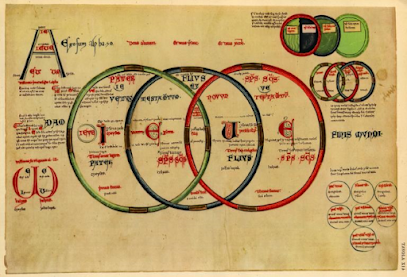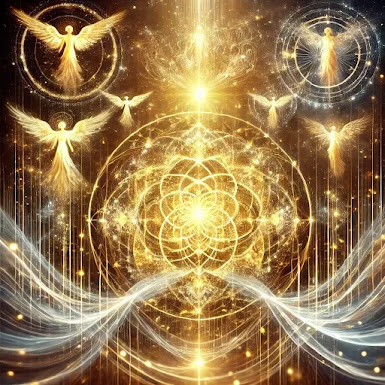Many people in the world today don’t believe in God or have forgotten Him. They are busy with daily life and don’t think much about their soul and their spirit. But God is a Loving Father. He doesn’t want anyone to be lost. Because of this, He has decided to send the world a special moment. This moment is called The Great Warning. It is also called the Illumination of Conscience. This event will be very big! It will touch every person in the world. It is the last Big Gift of God’s Mercy before harder times come.
The Great Warning isn’t something new. For many years, God, Jesus, and the Virgin Mary have told people about this event. They spoke to many chosen souls across the world. These messages were given through dreams, visions, and inner voices. All the messages talk about the same thing. They say that God will allow people to see their own soul the way He sees it. Every person will understand the good and bad they have done. Everyone will see how their sins have hurt themselves, others, and God. This will be very hard, but it will also be a Great Act of Love.
What will happen during the Great Warning?
According to Luz de Maria and other modern prophets, before the Great Warning happens, there will be signs in the sky. People will see a very Big Cross in the sky. It will shine with Great Light. It will be brighter than the sun. Everyone on Earth will see this Cross. It will stay in the sky for several days. Then, something like two stars will crash in the sky. There will be a strong light and a loud sound. The sky will become dark, and then very bright. This will scare many people. But it won’t hurt the body. It isn’t a physical disaster. It’s a spiritual one.
After this cosmic sign, the real Warning will begin. Every person on Earth will feel it. It doesn’t matter if someone believes in God or not. It doesn’t matter where they live. It doesn’t matter what religion they are. Everyone will be alone, with only their soul and God. Time will feel like it’s stopped. This moment will last around 15 to 20 minutes, but it will feel much longer. In this time, every person will see all their sins. They will see the good they didn’t do. They will feel the pain of their sins. They will see the effects of their actions on other people. They will feel sorry or afraid. Many will cry.
This experience will be like watching a movie of your life. But it won’t be a normal film. You’ll feel every moment deeply. You’ll feel the pain you gave to others. You’ll feel the sadness that God feels when we sin. You’ll also feel joy when you remember the good things you did. But for most people, it will be very hard. Some may even want to die because they feel so bad. Others will repent and turn back to God.
Why is God sending this Warning?
God is sending this Warning because He loves us. Many people are far from Him. They live in sin and don’t even know it. Some have never heard the Truth. Others have forgotten it. The world today is full of lies, pride, hate, and confusion. The Warning is like a strong shake to wake up the souls. It’s not a punishment. It’s a chance. It’s a chance to see the Truth. It’s a chance to return to God. It’s a call to conversion.
This is the last Big Act of God’s Mercy before a time of suffering comes. After the Warning, there will be a Great Miracle for the whole world. This Miracle will prove that the Warning came from God. After the Miracle, there will be a time of punishment for the world. This will be a purification. But the Warning comes first, because God wants to give us a choice. He wants us to decide: do we want to live with Him or without Him?
The Warning is also a preparation. It prepares the heart for the days that come soon. It helps people change before the punishment arrives. It’s also a way to bring Unity. If many people repent, the punishment may be smaller. But if people ignore the Warning, things will get even worse.
How will people feel during the Warning?
Many people will feel great fear. Others will feel great sorrow. Some may feel joy because they are ready. It depends on the state of each soul. If a person is close to God, they will feel peace. If a person is far from God, they’ll feel emptiness. Some people may feel like God is not there. They’ll feel alone and scared. This is called the “absence of God.” It’s a very painful feeling. It’s what hell is like.
Luz de Maria had a vision of the Warning. She felt very bad during it. She felt deep loneliness. She felt all the pain of sins like abortion, suicide, abuse, and hate. She felt that God had left her. It was very scary. But then, after a long time, she felt Peace. She said that the Warning is something no one can really be ready for, but it will change your life forever.
Another visionary named Conchita from Garabandal said the same thing. She saw the Warning in a vision. She said it will be like a purification. Everyone will see themselves like God sees them. She said even non-believers will know it comes from God. But many will still reject it. She said some people may even die from the shock or the fear. Others will run to the church and confess their sins. Some will be angry and say it’s fake.
What do other messages say?
Many saints and mystics have spoken about the Warning. A woman named Maria Esperanza said that it will be like a bright day of Light. People’s hearts will be shaken. They’ll see all their sins. They’ll want to fix their lives and give their hearts to Jesus.
In Medjugorje, one of the visionaries said that there will be three warnings. The Warning is the first one. Then there will be a visible sign for the whole world. Then the time of Mercy will end. She said we must convert now. We must not wait. Time is short.
In other places, like El Escorial and Betania, the Virgin Mary also spoke about this. She said that the Warning is very near. She said it’s a Great Act of Love from God. She said that we must prepare with prayer, confession, and penance.
Saint Faustina also had a message from Jesus. He told her that before the Judgement Day, there will be a sign in the sky. A Cross will appear. Then there will be darkness. Then lights will come from the wounds of Jesus and shine on the Earth. This is very similar to the Warning.
Father Stefano Gobbi, a holy priest from Italy, received many messages from the Blessed Virgin Mary. This was part of the Marian Movement of Priests. In the messages, Mary spoke about the Warning too.
She said:
“The Holy Spirit will come, to prepare the glorious reign of Christ. It will be a Reign of Grace, Holiness, Love, Justice and Peace. With His Divine Fire, He will open the hearts of all and will illuminate all consciences.”
She explained that this will be like a small judgment. Everyone will see their life in the Light of God. She said:
“It will be something very great, that has never happened before. It will be like a small judgment and everyone will see their life and all their works in the light of God.”
This message is very similar to what others have received. Don Gobbi explained that this Warning is not the end, but the beginning of a new time. It is a great moment of grace. But it also brings responsibility. People must decide: Do I follow God or not?
Mary told Don Gobbi that the Luminous Cross in the sky will be a sign. It will stretch from east to west. It will show that Jesus is coming soon in His glory. It will mark the end of the time of darkness and the beginning of the New Era.
She said:
“The Luminous Cross that will appear in the sky at the end of the purification and the great tribulation, will be the door that opens the dark tomb where humanity lies, to bring it into the New Kingdom of Life.”
These messages are full of Hope. But they also ask for serious preparation. Don Stefano Gobbi said many times that now is the time to pray, confess, and return to God. The Warning will be sudden. But God is preparing us with these words of Love.
How can we prepare?
The best way to prepare for the Warning is to be in the state of Grace.We should pray every day. We should practise and spread Virtues (Love, Peace, Harmony, Righteousness, Loyalty, Respect, Altruism). We should do good deeds. We should try to love others. The Warning isn’t something to be afraid of if you love and follow God. It’s a Divine Gift. It is a Great Help. It will show us the Truth. It will give us the chance to say sorry and change. But if we are not ready, it will be very painful. That’s why it’s important to start now.
God always gives us time. He does not want to punish. He wants to forgive. But He also respects our freedom. He won’t force us. He lets us choose. That’s why the Warning is important. It gives us the Light to see clearly. Then we must choose the path we want.
What will happen after the Warning?
After the Warning, there will be many changes. Some people will repent and become holy. Others will become harder and will hate God more. Many will try to explain the Warning in scientific ways. They will say it was a natural thing. They will try to lead people away from the Truth.
But those who believe will become stronger. Many souls will return to God. A Great Miracle will come after. Then a time of Peace will begin for those who love God. But before that, there will be suffering. There will be wars, disease, and darkness. That is why we must be strong.
Jesus told Luz de Maria that the whole Universe is waiting to be clean. Even nature is hurt by sin. That’s why the sky and the stars will show signs. All of this is to bring New Life. God is making all things new.
Final words
The Great Warning is real. It’s coming. We don’t know the day or the hour. But the signs show us it’s close. The world is in crisis. People are turning away from God. That’s why God is sending this last chance. It is His way of calling us home.
We must not wait. We must change our lives now. We must pray more. We must practise Virtues. We must forgive others. We must help those in need. We must LOVE.
When the Great Warning comes, it will be hard. But it will also be beautiful. It will be the moment when many people see how much God loves them. Even in pain, His Love will shine. Let’s get ready. Let’s open our hearts. Let’s say yes to God.
This is the Last Great Gift of God before the Time of Justice. Let’s not waste it!
_________________________________________
References:
https://revelacionesmarianas.com/ingles/especiales/avisoalahumanidad.html
https://profezie3m.it/ptm_c2-3.htm#C1











